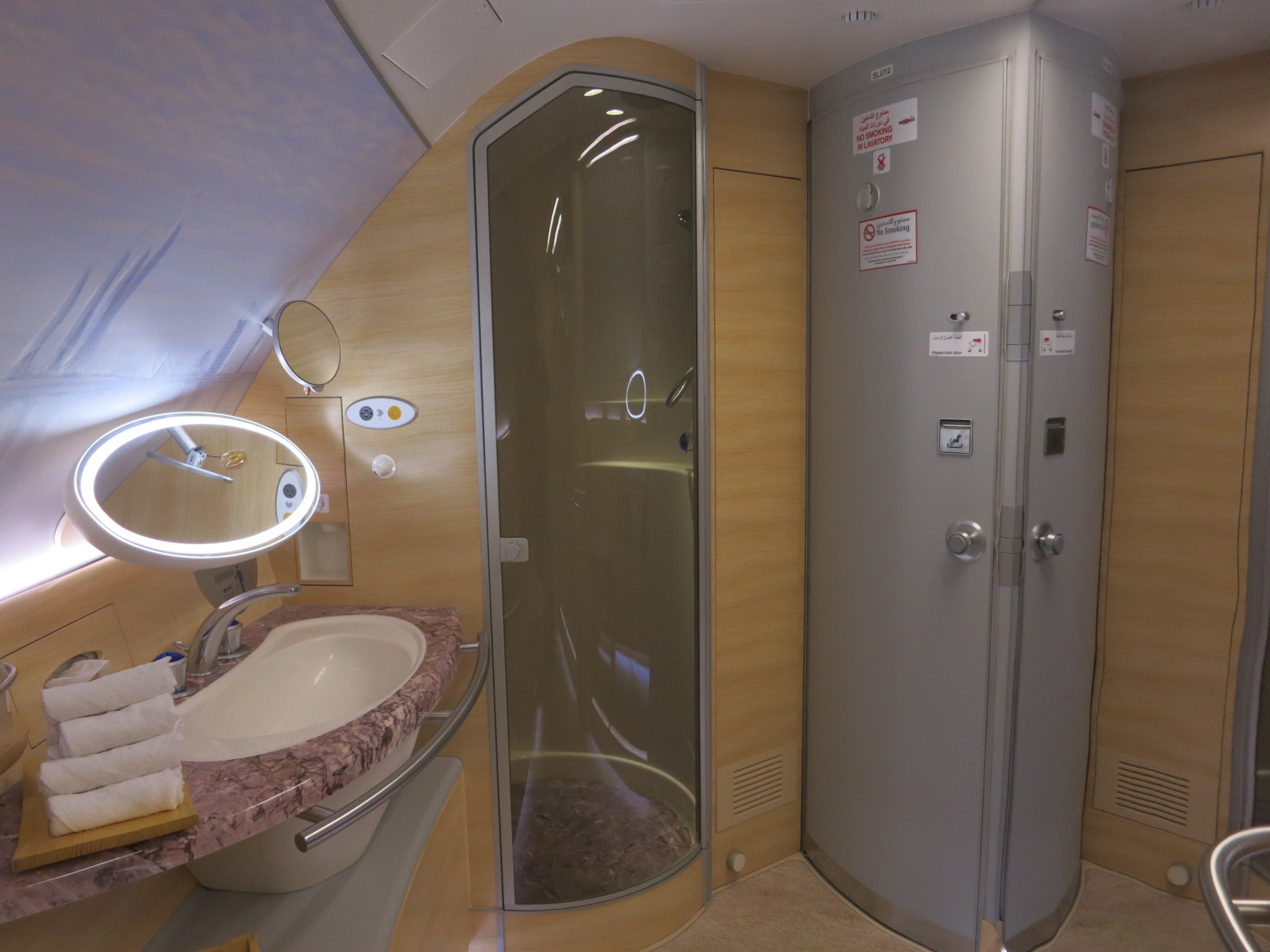The Airbus A380 is popular with customers for its spaciousness, although airlines are just now starting to really squeeze passengers into it like never before. However it’s never been popular with very many airlines.
Conceived of as a plane for ferrying large numbers of people between major cities, flying between the largest slot constrained airports where passengers might connect onward, the industry has gone in another direction entirely: point-to-point flying with smaller more fuel efficient jets that bypass additional connections entirely.
Though Airbus doesn’t publish final development costs for the superjumbo, those are estimated to be north of $25 billion dollars. Yet the plane that’s now been flying for a dozen years has only received 317 firm orders. Of those, 217 have been delivered — 100 of which have been delivered to Emirates.
(Emirates is the customer for another 42 of the remaining 100 aircraft in the Airbus order book.)

Emirates Airbus A380
In other words, the plane is far more niche than hoped. For Airbus the program is largely a failure. However it’s been developed, the question is can it continue?
Last week it was expected to get a shot in the arm from another big Emirates order. Reportedly Emirates had a handshake deal with Airbus to place an order for 36 more A380s at the Dubai Air Show last week.
Less than a week later, the sides had agreed a handshake deal, according to people familiar with the deal, who asked not to be identified because the deliberations were private. Emirates would take another 36 A380s worth $17 billion, bringing its total to a staggering 178 aircraft, more than half the model’s entire order book, the people said.
However Emirates has had two concerns.
- Airbus’ commitment to the program. They want Airbus to continue production of the superjumbo into the future, and not just to complete their own order.
- They want a new more efficient engine for the A380 (‘new engine option’) for the plane.

Singapore is Committed to New A380s — But Only to Replace Ones They’re Retiring
Emirates pushed Airbus “to buy back some its oldest jets to help ease those concerns” about the A380 program’s longevity.
And whereas Emirates has been buying Rolls Royce engines for its A380s based on a deal “that was keenly priced and offered particularly appealing terms for the maintenance work” Rolls Royce wouldn’t make such a deal again and has been unwilling “to upgrade the Trent 900 turbine that powers the superjumbo.”
Reportedly Emirates informed Airbus just as the air show began that they wouldn’t execute the deal as “Airbus PR executives who were already in place for a double-signing ceremony a hundred yards away.”

Emirates A380 First Class Shower Suite
The COO of Airbus says it’s still possible to rescue the deal before the end of the year. But Emirates drives a hard bargain as the only one interested in making a large order for these planes and insisting that they get them on favorable economic terms and that they also receive a commitment that production of the plane has 10 years of life. They want a live program to ensure parts and services for their aircraft into the future.
Emirates is the only potential major sale of the aircraft, the only way to keep the program alive, and it’s tough for Airbus to walk away from that — even at a loss.
Watch as an Emirates Airbus A380 lands in crosswinds in Dusseldorf:


sorry Gary a complete waste of my time and yours. Theres not 1 single item that you mentioned that wasnt published by various news sources already(not talking about any Blog) and weeks ago at that
come on in expect alot more and better from you. If theres nothing new to add why bother making a new post. Next thing you will start a post about JFK being assassinated. . I hope this will be the last time you lower yourself to this level
“They want a live program to ensure parts and services for their aircraft into the future.”
Parts and service will be available in any case. The real issue is that the end of the program means that there will be no acceptance in the used aircraft market, and the resale value will fall through the floor. The planes coming off lease are already worth more as spare parts than as flying machines. The continuation of the program is critical for Emirates, not only because of the aircraft they carry on their books (likely at book values far in excess of what they will be worth) but because many related UAE financial institutions have A380s on their books as collateral or lease fleets and the write downs will be massive. The end of the A380 will be a much bigger financial crisis than an operational crisis.
Gary, I do appreciate these busienss oriented posts! I don’t normally scour airline blogs and appreciate your round of the “inter webs” as you put it! Thanks
It’s hard to have any good feelings for Emirates (which for several years repeatedly lied about the angled “flat” seats in business class to the WSJ and others) or for Airbus, which would not even exist without massive Euro government subsidies and which spent billions developing a product that nobody really needs. At least Boeing was smart enough to dump 747 (passenger) and came up with a fantastic product in the 787. Airbus is now playing catch up.
I think acquiring Bombardier’s CS100 indicates Airbus knows the way forward.
Airbus, as well as EASA & FAA, still have to address the non-contained engine explosions of both the Trent 900, and the GP7000 engines.
A recently “retired” aquaintence from Toulouse, tells of A380 wing tooling issues causing engine nacell misalignment, which because of the variation imtroduced, is suspected in creating preload and engine imbalances, thus the engine failures.
As the tooling development was classified as “non-recurring” cost, and is no longer amortizable, Airbus is rather reluctant to spend the necessary money, even on such a critical airworthiness safety issue, unless they can get Rolls and the Engine Alliance to pay the majority of costs, including the nacell alignment tooling, for the neo Emirates, and others are looking for.